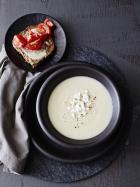By: Judy Davie - The Food Coach
 Cooking with a pressure cooker has long been a favourite in kitchens worldwide, and it's not hard to see why. This versatile appliance offers a range of benefits, making it a valuable tool for anyone looking to prepare delicious, healthy meals with ease. Cooking with a pressure cooker has long been a favourite in kitchens worldwide, and it's not hard to see why. This versatile appliance offers a range of benefits, making it a valuable tool for anyone looking to prepare delicious, healthy meals with ease.
Here's are 3 key reasons why you should include a pressure cooker in your kitchen
Health Benefits
Pressure cooking is a fantastic way to retain the nutrients in your vegetables. The sealed environment of a pressure cooker means that vitamins and minerals that might otherwise evaporate or leach out during conventional cooking methods are preserved. Additionally, pressure cooking reduces cooking time, which helps maintain the integrity of water-soluble vitamins like Vitamin C and B vitamins that can be lost through prolonged cooking.
Another health advantage is that pressure cooking requires less fat and oil to achieve great flavours. The high-pressure environment allows for thorough cooking without the need for excess oil, making it a heart-healthy option for preparing your favourite vegetable dishes.
Ease and Speed
One of the most significant benefits of using a pressure cooker is its speed. Busy schedules can make it challenging to prepare wholesome meals, but a pressure cooker can significantly cut down on cooking time. What might take an hour or more on the stovetop can be done in a fraction of that time. This efficiency makes it easier to enjoy home-cooked meals, even on the busiest of days.
Using a pressure cooker is also straightforward. Modern pressure cookers come with user-friendly features like pre-set cooking times and safety locks, making them accessible to both novice and experienced cooks alike. The one-pot nature of pressure cooking means less clean-up, too-another time-saver!
Economic Benefits
Pressure cooking is not only quick but also energy-efficient. By reducing cooking times, you use less energy, which can result in lower utility bills. Furthermore, pressure cookers allow you to use more affordable cuts of meat and still achieve tender, flavourful results. When it comes to vegetables, pressure cooking enhances their natural sweetness and flavour, meaning you can create delicious dishes with simple, inexpensive ingredients.
What You Can Cook in a Pressure Cooker
The pressure cooker is incredibly versatile and particularly shines when cooking vegetables. Here are some ideas:
Root Vegetables: Carrots, potatoes, parsnips and beetroot cook quickly and retain their flavour and nutrients.
Legumes: Dried beans and lentils can be cooked to perfection in a fraction of the time it takes to boil them.
Soups and Stews Vegetables are perfectly cooked in rich, flavourful broths, making hearty and nutritious meals.
With a pressure cooker, the possibilities are endless. You can experiment with a wide range of vegetables, creating everything from simple side dishes to complex, flavourful meals.
Cauliflower and Fetta Soup
Here's a delightful recipe that showcases how a pressure cooker can transform simple ingredients into a luxurious soup:
Ingredients:
1 tbs olive oil
1 onion, diced
3 celery stalks, diced
2 large cloves garlic, crushed
1 whole cauliflower, cut into florets
30 g raw almonds
50 g fetta
2 litres chicken stock
1 tsp white wine vinegar
Salt and pepper to taste
Method:
Heat olive oil in the pressure cooker and sauté the onion, celery, and garlic for 2 minutes until softened.
Add the cauliflower florets, raw almonds, fetta, chicken stock, and white wine vinegar. Season with salt and pepper to taste.
Secure the lid of the pressure cooker and set it to seal mode.
Pressure cook for 25 minutes.
Allow the pressure to release naturally, or carefully use the quick release method. Once safe to open, remove the lid.
Use an immersion blender to blend the soup until smooth.
Serve hot, garnished with extra crumbled fetta if desired.
This soup is just one example of how pressure cooking can turn humble vegetables into a nourishing and flavourful meal.
Comments
Be the first to comment!
|